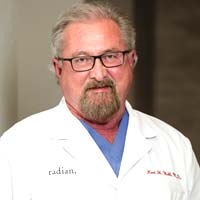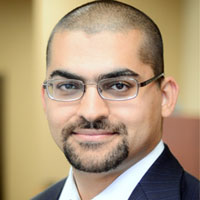ARTAS Robotic Hair Transplant System Now in Houston Clinic
Houston-based Mosaic Clinic has enhanced its hair transplant services by adopting the ARTAS hair transplant system. ARTAS is a surgical procedure of doing FUE or follicular unit extractions using robotic technology.
This new technique hastens the recovery process and does not result in ugly scars. The FUE process is done by robots using imaging technologies which facilitates extraction of follicular units.
The Mosaic Clinic strives to stand by its promise of offering people with hair loss problems a new life. It assures natural growing hair for patients and adopts new techniques and uses other advanced methods of performing FUE like Neograft FUE, and Alphagraft FUE.
Both the Neograft and ARTAS Robotic FUE Hair Transplants systems are minimally invasive and hence not painful. Also like Neograft method the ARTAS robotic FUE hair transplants produces no line scar after the restoration procedure.
The ARTAS robotic system not only reduces the time taken and increases the number of transplants that can be made but also requires fewer personnel and relies on the technical expertise of the hair transplant surgeon only. The procedure eliminates stitches and scars and the usage of scalpels enabling quick recovery.
The system uses a 3-Dimensional image-guided program with a robotic arm, video imaging with instant live motion tracking, and a friendly user interface. More than 500 grafts per hour can be dissected which becomes 2,000 grafts per session.
Usually the standard strip surgery harvest results in a large scar and requires a long recovery time too. In case of Follicular unit extraction (FUE) harvest, patients can return to work the next day itself because the hair transplant procedure is minimally invasive.
The logistics of obtaining optimal graft to ensure its survival is imperative to produce great hair transplant results. The ARTAS Robotic FUE hair restoration system leverages sophisticated software and involves artistry and aesthetics in hair restoration.
Although many clinics mix FUE with FUT/Strip surgery a few offer only FUE with both ARTAS and Neograft. The Mosaic Clinic offers all FUE approaches from Neograft and Alphagraft to ARTAS highlighting its versatility and the capabilities of the double doctoral degree physicians there.
According to the clinic the hair restoration procedures are minimally invasive physically and also minimally invasive on the wallet. Not only accessible to the rich and famous but also to anyone who wants to look nice with a full crop of hair. The totally naturally look and fast recovery
ensured by the ARTAS system helps people resume work soon and also regain confidence, opine experts.
Hairfear
Frequently asked questions about hair transplant procedures
How much does a hair transplant cost?
Hair transplants can vary in price based off of the area in the world that you are interested in getting a hair transplant as well as the size of the area where you may need a hair transplant. Experienced doctors in the United States will often charge some of the highest prices for a hair transplant worldwide and this is why so many travelers make the move to other parts the world like Turkey, India, Thailand, Mexico...etc for their hair transplants.
Will a hair transplant hurt?
Although hair transplants may look like a particularly
unpleasant or painful experience is actually very little discomfort involved
with the surgery itself. Hair transplants are always done under an anesthetic so there's absolutely zero pain during the treatment itself. Many people actually relate the process as being very similar to going to the dentist for filling or root canal. Mild pain can persist over the course of postop treatment but he generally just resumes for a few days.
Who can deliver the best surgery?
It's usually best to consider working with surgeons who have and IAHRS certification or international alliance of hair restoration surgeons recognition. IAHRS can often deliver recommendations for the best surgeons in each particular area.
Is this scarring noticeable?
Any type of hair transplant will require the use of incisions throughout the scalp. There can also sometimes be a small scar from the donor area towards the back of the scalp. Asking to look at photos of the surgeon's previous work will help you to see roughly how bad the scarring could be. In most cases an experienced professional can limit the look of scarring and noticeable marks from the surgery.
How long does it take for the hair to grow?
In most cases hair growth will start within eight months and you can start to see a full effect from the hair transplant after a full year. The initial signs of growth can usually start between 3 to 4 months after the surgery.
Are the results permanent?
The hair follicles that are transplanted are generally the ones which are genetically resistant against the symptoms of baldness. As long as you receive hair loss treatment later in your life after the symptoms of balding have started to subside, you can have a better chance at permanent results.
While everyone know you've had surgery?
If you want to limit the chance that people may find out about your surgery it's important to give at least three weeks of healing as the surgical area will be affected and red just after surgery. After around a month of healing it can look far less noticeable. You could consider wearing a hat while time passes or opting for some extra time off if possible.
How long should I rest after surgery?
It's recommended to rest for at least a few days after surgery so that your body can recover. Trenton to over exert yourself and limit sexual activity, running in the gym for around 10 days after surgery.
Is it possible to lose more hair as a result of surgery?
There is always a chance of shock loss which happens when the hair is weak and miniaturizing after the surgery. As long as the surgeon is choosing the correct hair follicles and performing the surgery well it's possible to minimize the chance of this happening however.
Will I need another hair transplant?
The need for another transplant really depends on the individual. With a solid foundation surgery and working to potentially bolster results with drug therapy, you can improve the stability of the hair that was transplanted as well as prevent further loss. Getting a hair transplant early
on in your 20s or early on in life could lead to needing long-term transplants as hair loss can be progressive.







